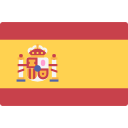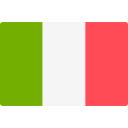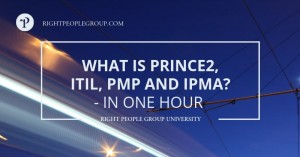In software development, an agile framework is a set of principles for software development under which requirements and solutions evolve through the collaborative effort of self-organizing cross-functional teams. It is a type of agile methodology that promotes adaptive planning, evolutionary development, early delivery, continuous improvement, and encourages rapid and flexible response to change.
In this blog, we explain seven types of agile methods which are popular in software development industry, their pros and cons, and what kinds of projects each agile methodology is suited for.
1. Waterfall
The waterfall method is a traditional, linear approach to software development. In this methodology, projects are completed in distinct phases, with each phase depending on the completion of the previous one.
This means that teams working in a waterfall environment must complete all the requirements gathering and planning upfront before any coding can begin. While this can provide predictability and stability, it can also lead to long project timelines and inflexible deliverables.
Pros:
The waterfall method is well-defined and easy to understand.
It can be helpful for large projects with lots of dependencies.
Waterfall is a good choice for teams that are new to agile.
Cons:
This methodology can lead to long project timelines and inflexible deliverables.
There is less opportunity for adaptation and change in a waterfall environment.
Teams may struggle to complete all the required work upfront.
Suitable projects
The Waterfall is best suited for projects with well-defined requirements and deliverables where the scope is unlikely to change during the course of the project.
It’s also a good choice for projects with a high degree of risk or highly regulated, such as in the financial or healthcare industries.
2. Scrum
Scrum is one of the most popular agile project management methods and it’s well-suited to iterative and incremental product development.
In a scrum team, projects are divided into sprints, or short time periods (usually two to four weeks) during which specific goals must be met. At the end of each sprint, the team assesses their progress and adjusts their plans for the next sprint accordingly.
This flexible approach allows teams to rapidly deliver features and respond to changes in customer demands.
Pros:
Scrum is a flexible and adaptive methodology.
It encourages collaboration and communication among team members.
Scrum is suitable for projects of all sizes.
Cons:
This methodology can be challenging to implement in a large organization.
The scrum master may have difficulty keeping the team on track.
Teams may struggle with scope creep or the tendency to add new features or requirements to a project beyond the original scope.
Suitable projects
The Scrum framework is well-suited for fast-paced, ever-changing environments where customer demands can rapidly change. It’s also a good choice for complex projects that require close collaboration among team members.
3. Kanban
Kanban is a lean approach to software development that emphasizes continuous delivery and collaboration. In Kanban, teams visualize their work using a Kanban board, which helps them to identify bottlenecks and optimize their workflow.
This methodology, initially introduced as a lean manufacturing system, is often used in conjunction with scrum, as it can help scrum teams to focus on delivering value and improving efficiency.
Pros
Kanban is a flexible methodology that can be adapted to different teams and environments.
It helps to visualize work, identify bottlenecks, and optimize the workflow.
Kanban can be used in conjunction with other agile methodologies.
Cons:
This methodology requires buy-in from all team members.
Teams may struggle to estimate the time required to complete tasks.
The Kanban board may become cluttered and difficult to manage as the project progresses.
Suitable projects
Kanban is best suited for projects where the scope is likely to change or where customer demands are unpredictable.
It’s also a good choice for teams that want to improve their workflow and increase their efficiency.
4. Extreme programming (XP)
Extreme programming (XP) is an agile methodology that emphasizes the importance of customer feedback and collaboration.
In XP, teams work in short cycles (usually two weeks or less) to deliver working software. They also make a commitment to continual refactoring and testing, which helps to ensure the quality of their code.
Pros:
XP is a customer-centric methodology, potentially leading to high customer satisfaction.
It encourages close collaboration and communication among team members.
XP helps to ensure the quality of code through refactoring and testing.
Cons:
This methodology can be challenging to implement in a large organization.
The scrum master may have difficulty keeping the team on track.
Teams may struggle with scope creep or the tendency to add new features or requirements to a project beyond the original scope.
Suitable projects
The XP methodology is well-suited for projects where customer feedback is essential and where the scope is likely to change.
It’s also a good choice for teams that want to improve the quality of their code.
5. Crystal
The Crystal agile methodology is based on the idea that there is no one-size-fits-all approach to software development. It consists of smaller agile development methodologies comprising Crystal Yellow, Crystal Clear, Crystal Red, Crystal Orange, and so on.
Teams choose the methodology that best suits their needs, values, and environment. Crystal Clear, for example, is a lightweight methodology that’s well-suited to small projects.
On the other hand, Crystal Yellow is designed for larger projects and organizations.
Pros:
The Crystal methodology offers a flexible approach to software development.
It helps teams choose the methodology best suits their needs, values, and environment.
Crystal Clear is a lightweight methodology that’s well-suited to small projects.
Cons:
This flexible approach may be confusing for some teams.
It’s important to choose the right methodology for the project.
The Crystal family of methodologies may be less suited to large projects.
Suitable projects
Crystal is best suited for projects where the team needs a flexible approach. It’s also a good choice for teams that want to choose the methodology that best suits their needs, values, and environment.
6. Feature-driven development (FDD)
Feature-driven development is an iterative and incremental approach that focuses on delivering features.
In FDD, teams first identify the key features of a product and then create a development plan that prioritizes these features.
They then work in short cycles (usually two weeks) to deliver increments of the product that include the selected features.
Pros:
FDD is a customer-centric methodology.
It helps teams to prioritize and deliver features that are most important to the customer.
FDD helps to ensure the quality of the product through testing and feedback.
Cons:
This methodology can be challenging to implement in a large organization.
The development plan may need to be updated frequently to reflect changes in customer requirements.
Teams may struggle with scope creep or the tendency to add new features or requirements to a project beyond the original scope.
Suitable projects
Because of its focus on customer involvement and short development cycles, FDD is particularly well-suited to projects with rapidly changing requirements or uncertain scope.
In addition, because each cycle produces a working version of the software, it can be used to track progress and ensure that the final product meets the customer’s needs.
7. Lean software development methodology
The Lean software development methodology is based on the principles of the Toyota Production System.
In this approach, teams strive to eliminate waste and optimize value throughout the software development process. This can be achieved through techniques such as continuous delivery, collaborative decision-making, and customer feedback.
Pros:
The Lean methodology helps teams to eliminate waste and optimize value.
It encourages continuous delivery, which can help to reduce development costs.
The Lean approach promotes collaboration and customer feedback.
Cons:
The Lean methodology may be challenging to implement in a large organization.
This approach requires close cooperation between the development team and the customer.
The Lean methodology may not be suitable for all types of projects.
Suitable projects
Lean is particularly well-suited to projects where there is a need to minimize waste and optimize value. It can also help reduce development costs.
This approach is best suited for projects where the development team and the customer can work closely together like development and design plan or similar project management.
Final thoughts
There are many different types of agile methodologies, and the one you choose depends on your team’s needs, values, and environment. If you’re just getting started with agile, we recommend trying out Scrum or Kanban. If you’re looking for a more flexible approach, consider Crystal or Feature-driven development. And if you’re interested in optimizing value throughout the development process, Lean development may be the right choice for you.












